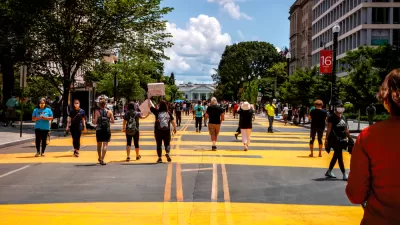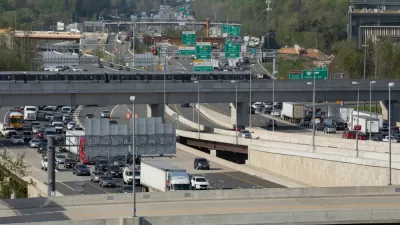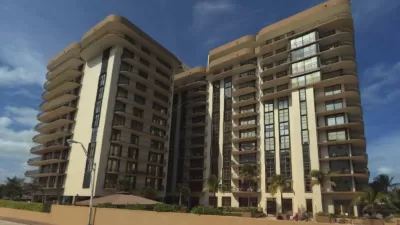Beyond the columns and the Capitol, Washington D.C. contains a wide variety of architectural gems and underappreciated neighborhoods, according to this Q&A about the city from Dwell.
Dwell talks about Washington D.C. with Martin Moeller, senior vice president and curator at the National Building Museum.
"For all the clever planning and snappy patter about historical preservation, the buildings in the District of Columbia can be remarkably staid. The multicolored row houses of Columbia Heights and the brick sidewalks of Georgetown easily outstrip more recent development, and with 45 separate historic districts, novelty rarely gets a chance to breathe. Even some of DC's attempts at modernity ring false."
Dwell: "Walkability is part of what makes DC wonderful. It also reveals its brand of weirdness, like the Khalil Gibran Memorial on Massachusetts Avenue, near where Cheney lives."
Moeller: "The typical visitor to Washington spends most of his or her time in highly ordered, controlled environments like the National Mall or Capitol Hill, while missing the diverse neighborhoods, lesser-known cultural institutions, and quirky local landmarks that punctuate the daily lives of residents. There are, for instance, an otherwise unremarkable couple of blocks of Corcoran Street NW that are peppered with delightful small metal sculptures-some freestanding in front gardens, others affixed to doors and facades–all by one artist who used to live on that street. To me, these modest works of art are as quintessentially Washingtonian as the Lincoln Memorial. They speak of a time when residents on that block knew the artist and were pleased to play a part in the permanent exhibit of his work. Sure, Washington has lost some of the eccentricity it once had–a dumpy row house that once bore a sign saying "The Embassy of Outer Space" is now an unlabeled, painfully tasteful yuppie domicile–but if people just look a little harder, they will find plenty of intriguing and quite strange tidbits lurking amid the manicured landscapes and polite facades of the capital city."
FULL STORY: Washington, DC

Planetizen Federal Action Tracker
A weekly monitor of how Trump’s orders and actions are impacting planners and planning in America.

Maui's Vacation Rental Debate Turns Ugly
Verbal attacks, misinformation campaigns and fistfights plague a high-stakes debate to convert thousands of vacation rentals into long-term housing.

Restaurant Patios Were a Pandemic Win — Why Were They so Hard to Keep?
Social distancing requirements and changes in travel patterns prompted cities to pilot new uses for street and sidewalk space. Then it got complicated.

In California Battle of Housing vs. Environment, Housing Just Won
A new state law significantly limits the power of CEQA, an environmental review law that served as a powerful tool for blocking new development.

Boulder Eliminates Parking Minimums Citywide
Officials estimate the cost of building a single underground parking space at up to $100,000.

Orange County, Florida Adopts Largest US “Sprawl Repair” Code
The ‘Orange Code’ seeks to rectify decades of sprawl-inducing, car-oriented development.
Urban Design for Planners 1: Software Tools
This six-course series explores essential urban design concepts using open source software and equips planners with the tools they need to participate fully in the urban design process.
Planning for Universal Design
Learn the tools for implementing Universal Design in planning regulations.
Heyer Gruel & Associates PA
JM Goldson LLC
Custer County Colorado
City of Camden Redevelopment Agency
City of Astoria
Transportation Research & Education Center (TREC) at Portland State University
Jefferson Parish Government
Camden Redevelopment Agency
City of Claremont





























